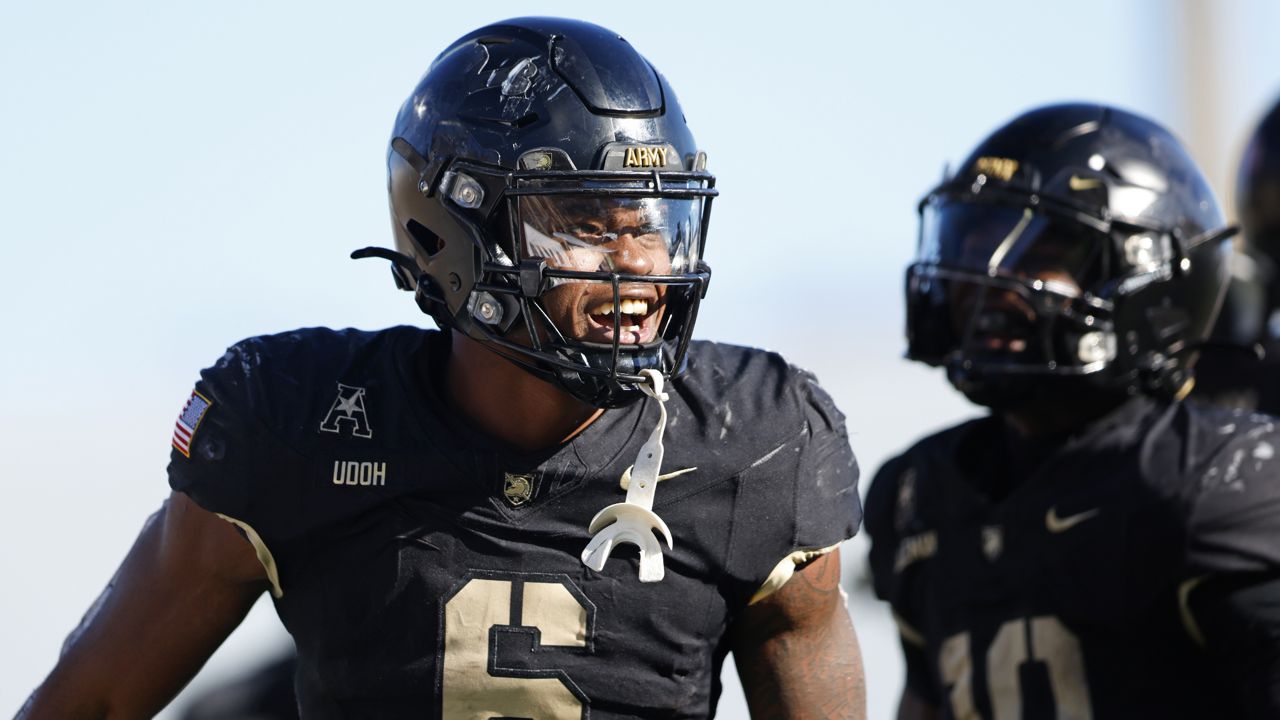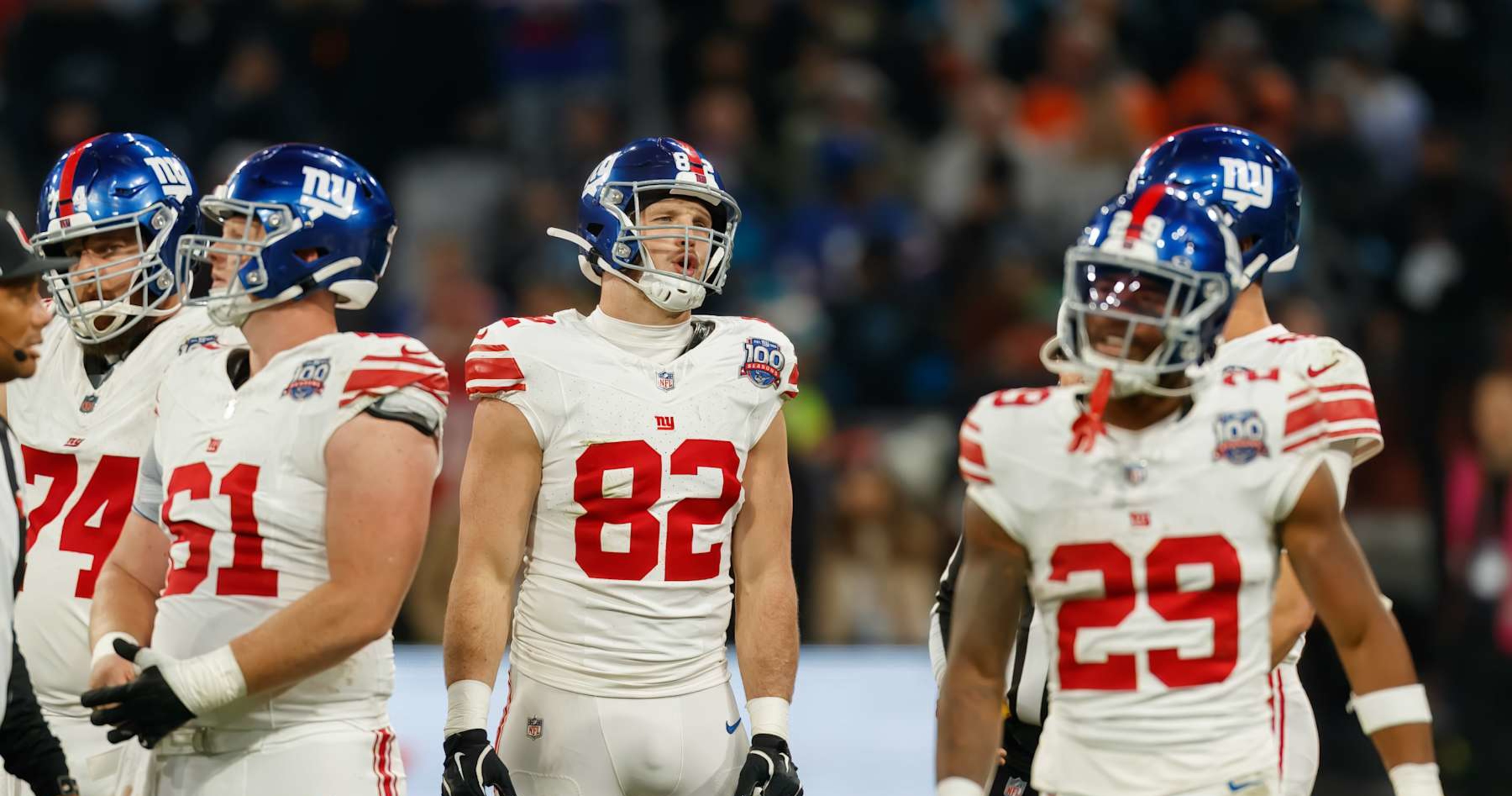NFL
NFL’s odd-looking new kickoff rules will come with own adjustment period

We get used to things, as sports fans, even if we are resistant in our ways. There are certain mysteries for which we never seek truth, such as: why can’t a quarterback, warming up on a sideline, receive the throw back to him by himself? Was there a rash of broken fingers one year in the ’60s? Weren’t football players supposed to be tougher in the good old days?
Here’s another: in 2024, we walk with GPS in our pockets, yet we still measure first downs with chains, the verdict sometimes announced by the ultra-scientific trick of a referee holding his hands a few inches apart. In a game that often comes to a screeching halt in search of a 13th replay angle to determine a “football move,” we still blindly accept the measurement of a contraption that looks like it was made in someone’s basement.
Which brings us to this new kickoff rule.
If you watch enough football, you’ve seen your share of horrific collisions, humans running at top speed into each other. It’s maybe the most brutal part of a brutal sport. The answer, in recent years, was to virtually eliminate the kickoff, as they moved it up five yards, where any halfway-decent kicker could boot one to (and often through) the end zone.
That was a different kind of brutal: it became boring. And in the NFL, the scale of boring-versus-bloody almost always shakes out to where the imperative is to wipe out the boredom before the blood.
So now we have the “Dynamic Kickoff Rule.” The “set-up zone” and the “landing zone” have entered the football lexicon (welcome, lads, and take a seat next to neutral zone and red zone). We no longer have the placekicker jogging toward his teammates and picking up steam as he lays into the ball; as if kickers aren’t already segregated enough, he’s 25 yards behind the rest of his teammates, who now must line up on the receiving team’s 40.
And they stay there until the ball lands either in the landing zone — goal line to 20-yard-line — or in the end zone. Then it’s a free-for-all. A team can still kick it out of the end zone, but now field position is the 30, instead of the 25. And while the poor kicker is often ostracized by his teammates, most good ones can nail 60-yarders in their sleep now. So field position is as important now as it’s ever been.
And … well, there’s nothing at all wrong with this, necessarily.
It’s just odd to look at. It’s weird. Unless you were a fan of the XFL (and kudos to both of you for your loyalty!), it’s unlike anything we’ve seen before. It’ll take some getting used to, especially as coaches learn, on the fly, how to maximize the rule to their personnel. This will certainly mean boffo business for staffers in ERs near NFL stadiums, since more returners are likely to get back to returning, and not fair-catching or take-a-kneeing, and therefore more prone to convalescing and recuperating and rehabbing.
Me? There was a time I’d have been thoroughly impatient with all of this. Not anymore. Look, every time a sport tries something new, there is generally immediate outrage followed by adapting followed, ultimately, by acceptance.
When the NCAA brought the 3-pointer into play, old-school hard-hats like Bob Knight acted as if someone had spray-painted graffiti onto the dome of St. Peter’s Basilica; in less than two years, Knight was drawing up play after play to make sure Steve Alford would carry him to a third national title, mostly by teeing it up from long range.
Don Shula, who once won a Super Bowl by limiting his All-Pro quarterback to seven pass attempts, won 174 of his record 328 games as a coach after 1978, when the rules changed to free up the passing game, and a man whose holy mission was to feed, feed, feed Larry Csonka, Mercury Morris and Jim Kiick happily handed the ball to Dan Marino.
Said, “Fire away, kid.”
Basketball became better when they mostly did away with jump balls, and by adding a shot clock. Baseball is better off now that four fingers from the dugout replaced the silly ritual of the intentional walk, and the pitch clock has helped speed things along. Hockey is 100 percent more watchable now that they’ve done away with the two-line-pass offsides rule, and opened up play in front of the goalie.
Not all changes have to send fans into spasm, like the ghost runner.
(Although, go ahead and shoot me, I like the ghost runner, though I’ve said here and elsewhere it should be done like this: play the 10th inning straight, put a man on first in the 11th, then a man on second the rest of the way.)
My guess: we’ll get used to landing zones and set-up zones. It may take a minute, and certainly will if a team is slow to adjust. I suspect there may be a rash of special-teams-coach vacancies along the way. Though I’m still puzzled by the chain links that award first downs. I doubt I’ll ever get past that one.










